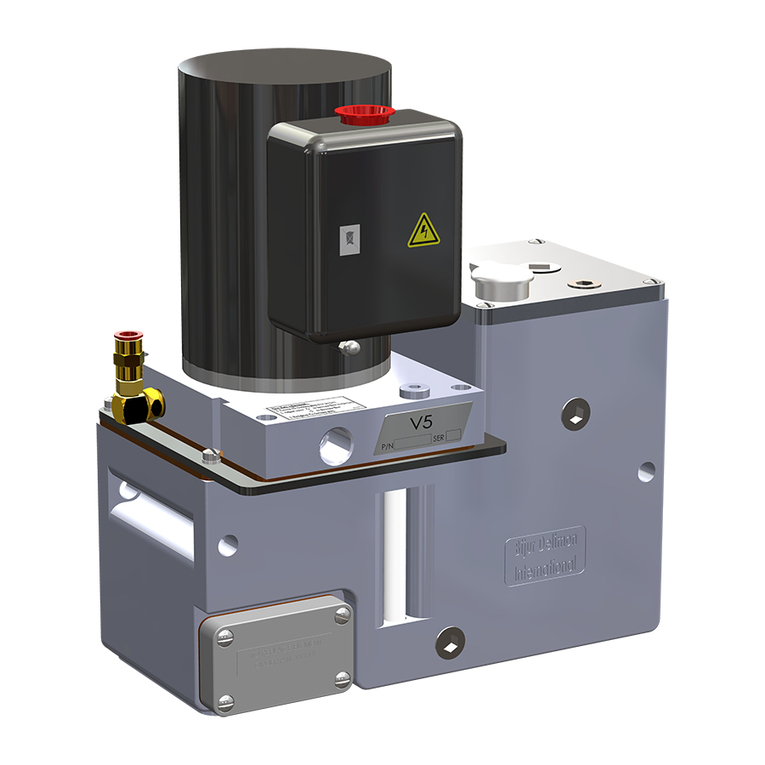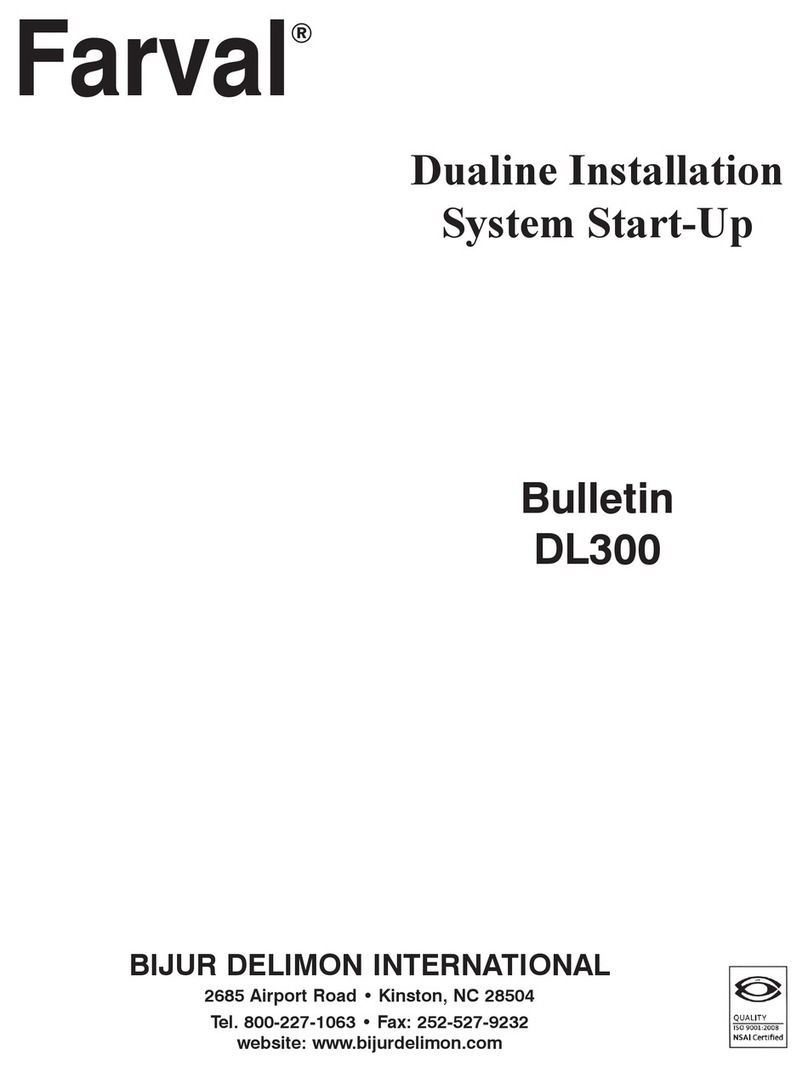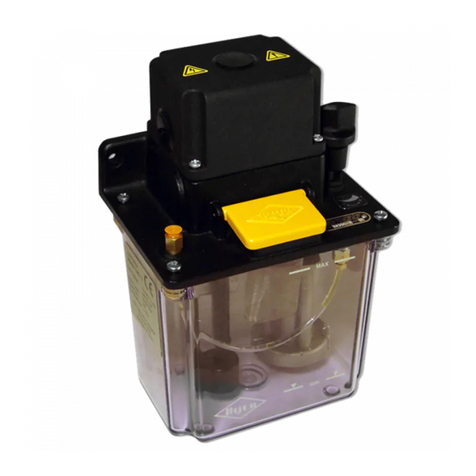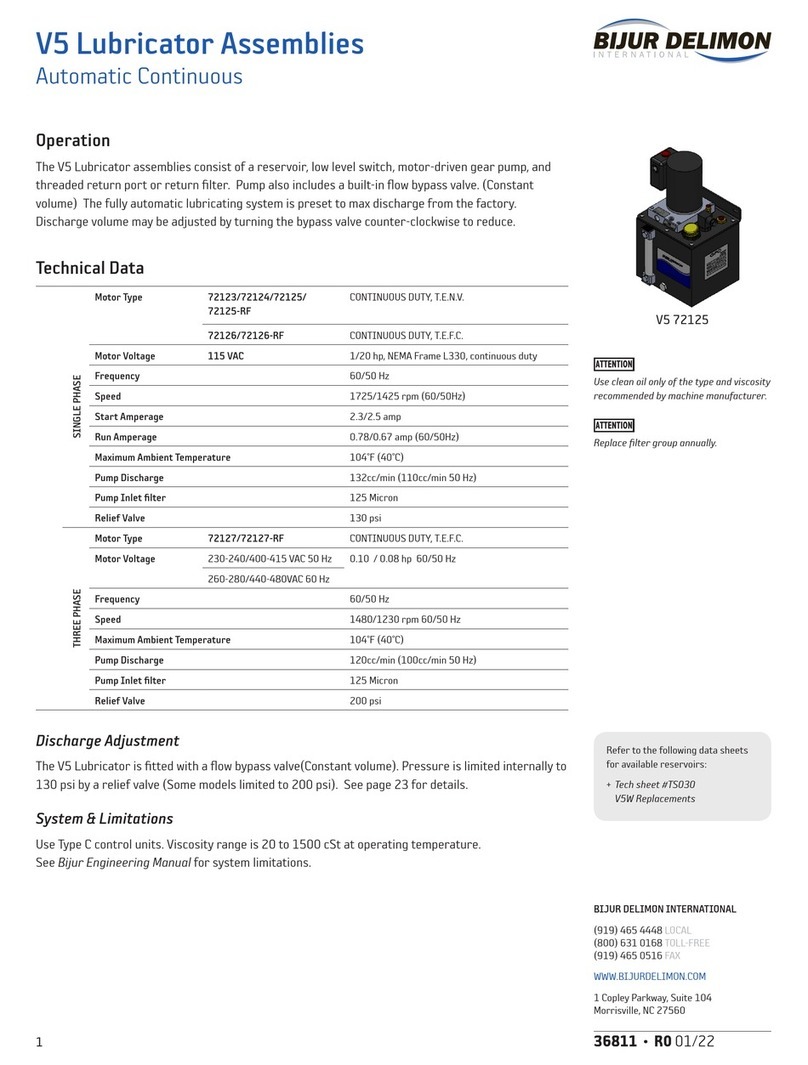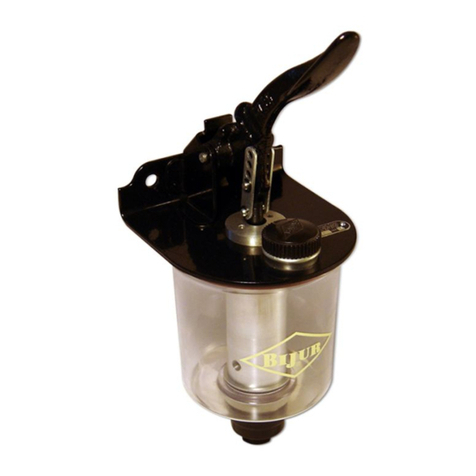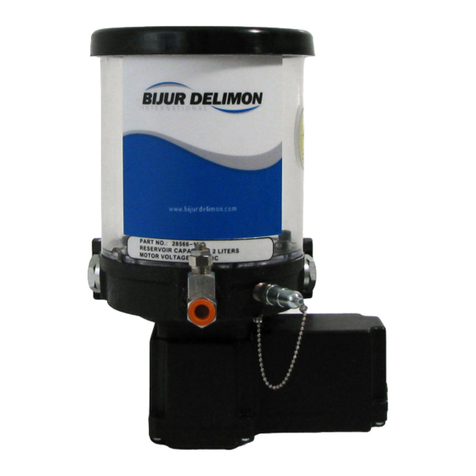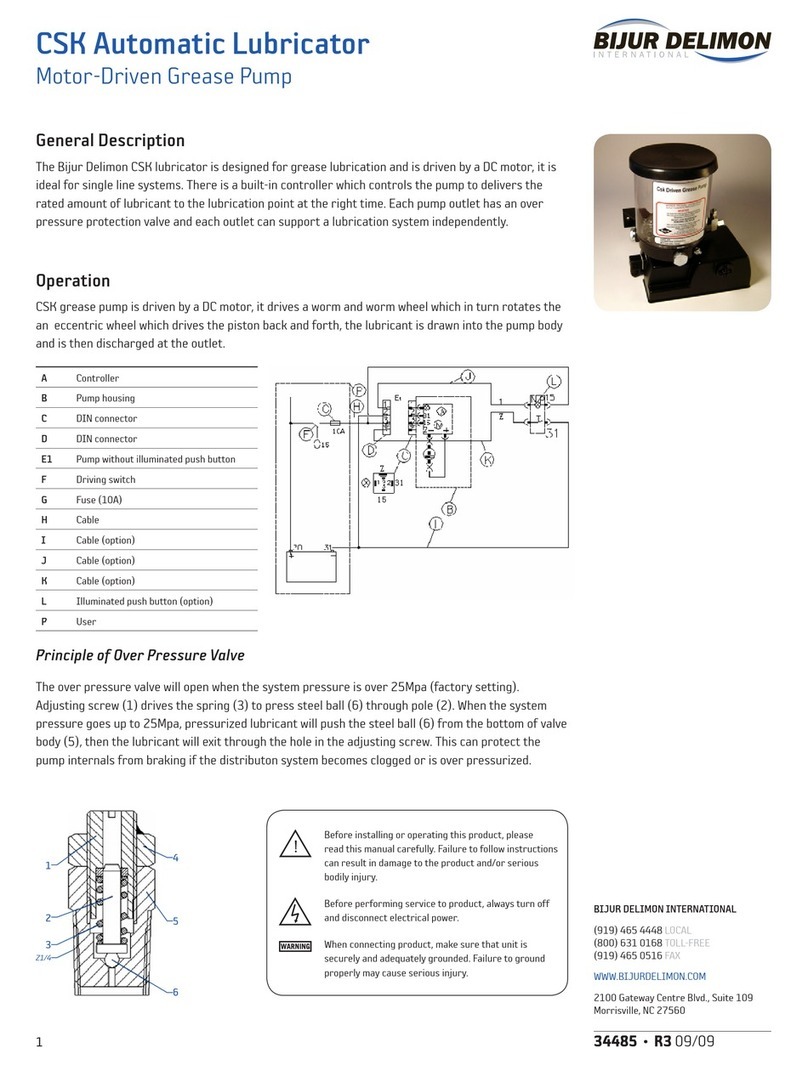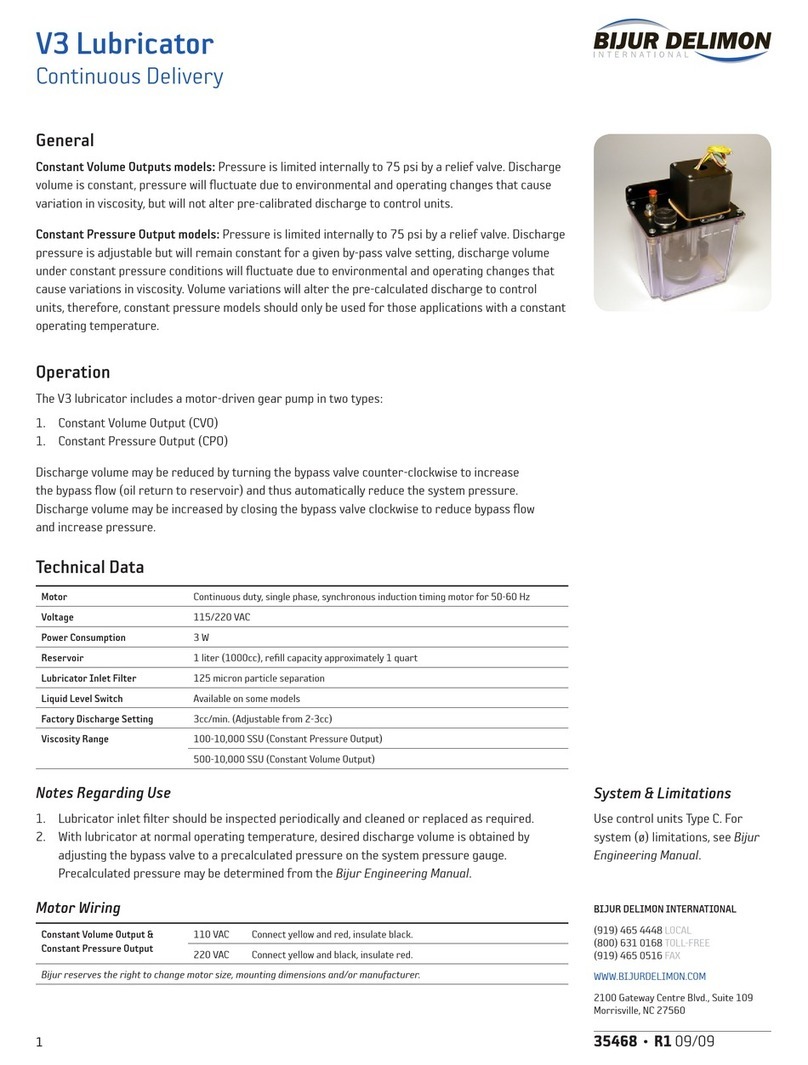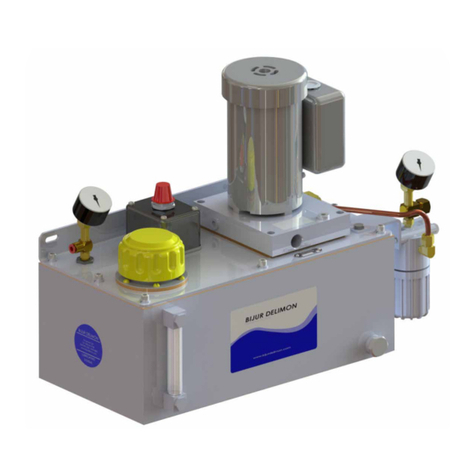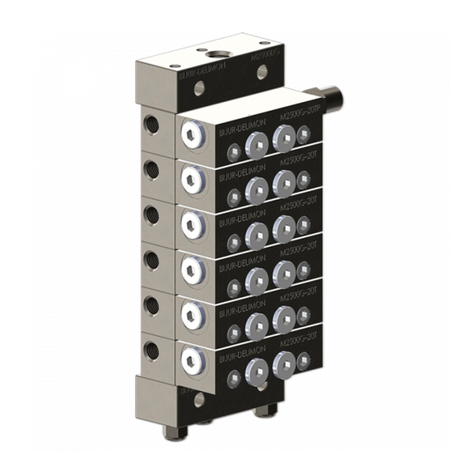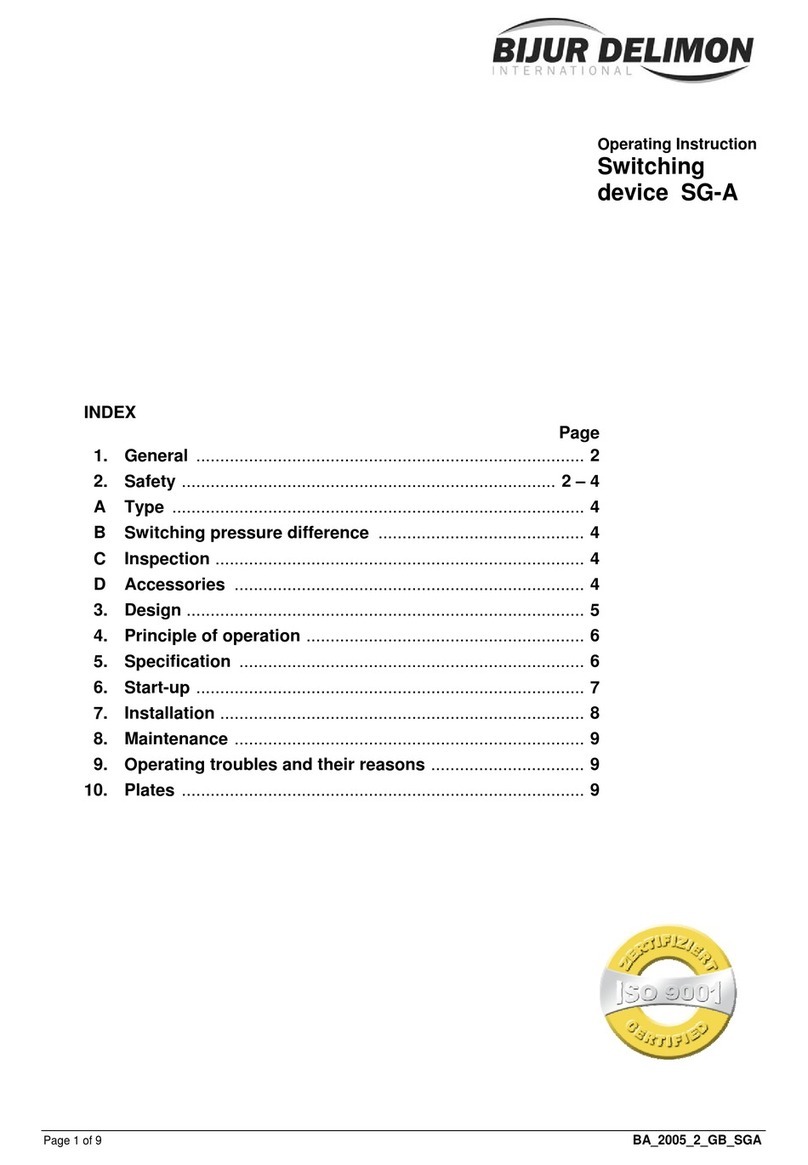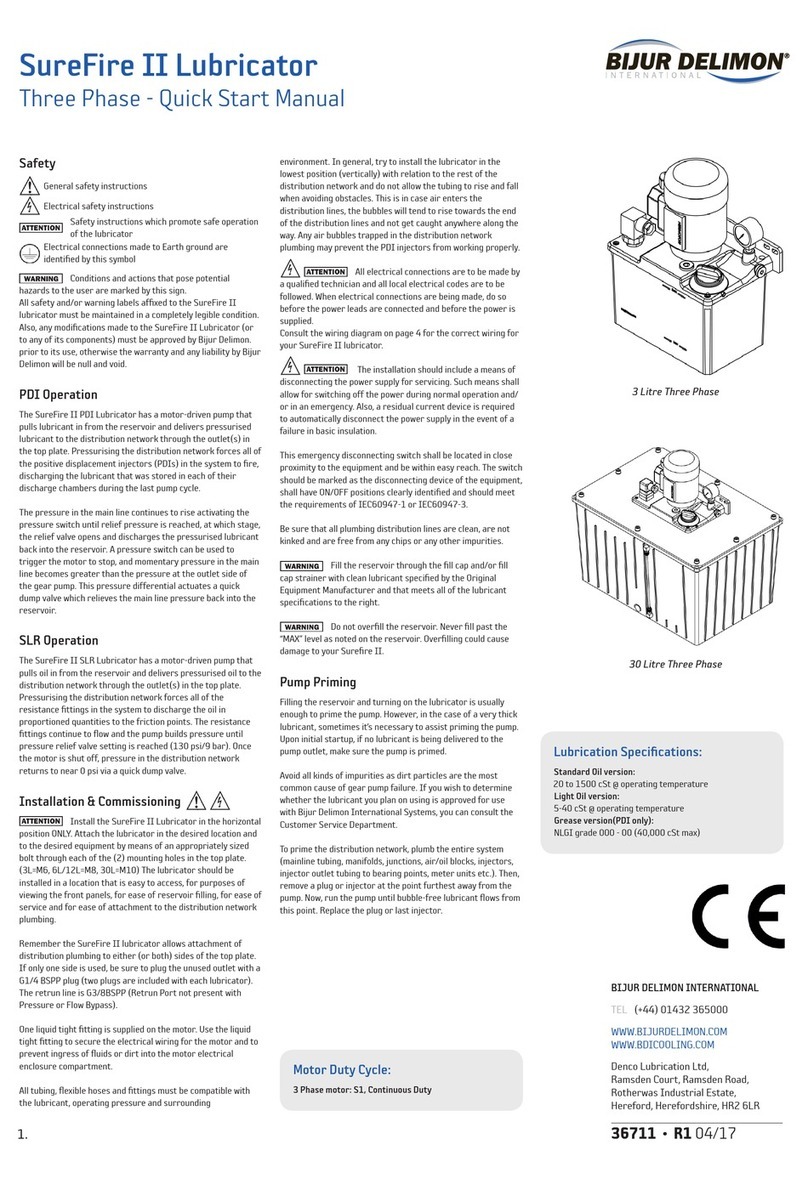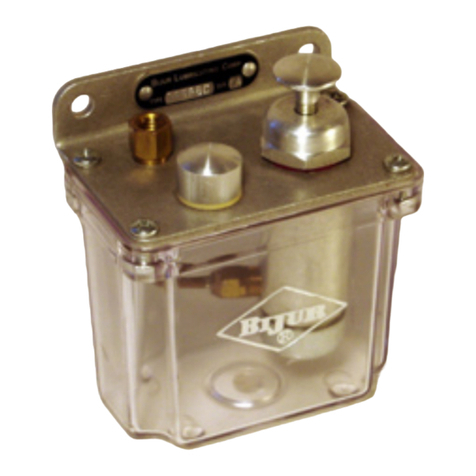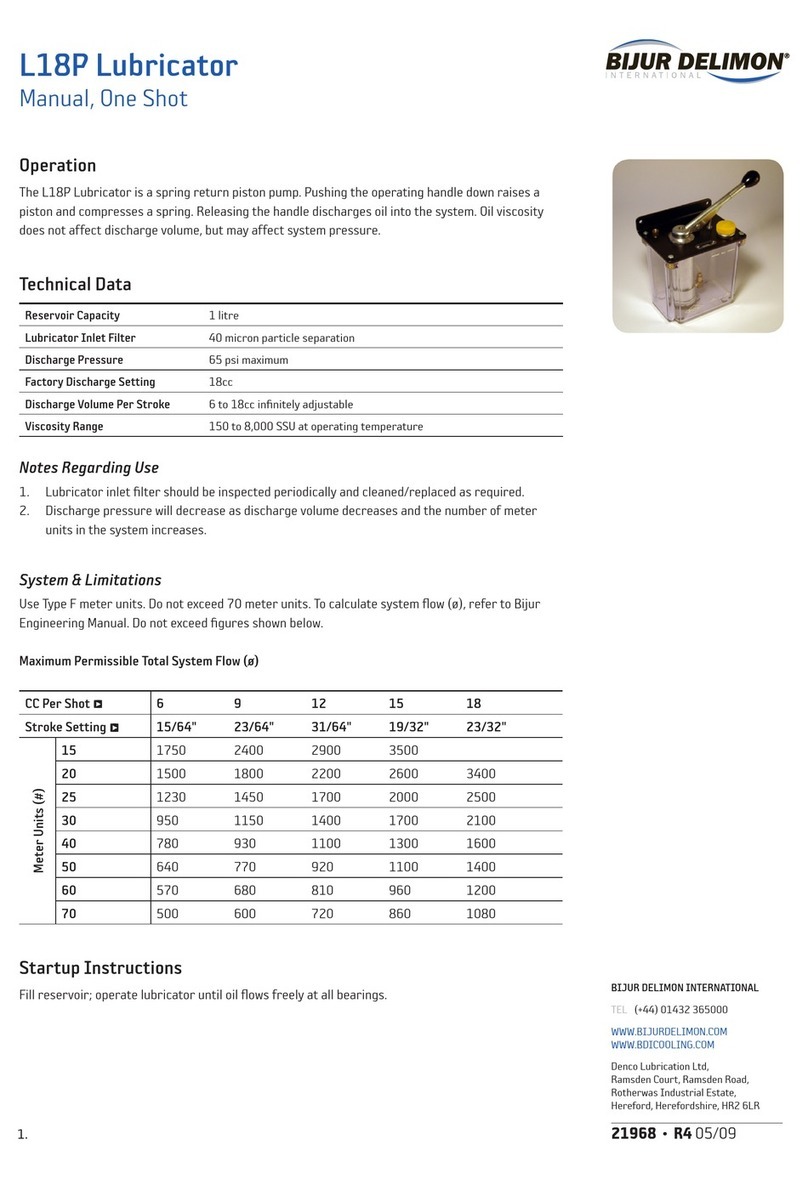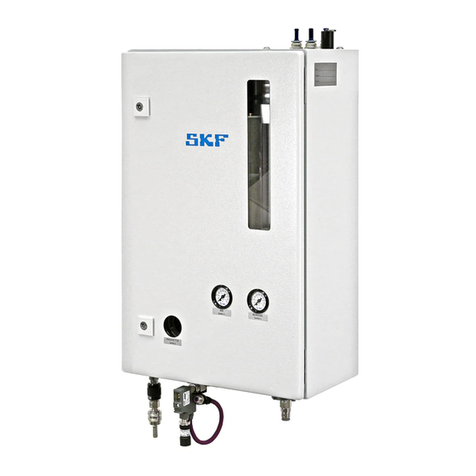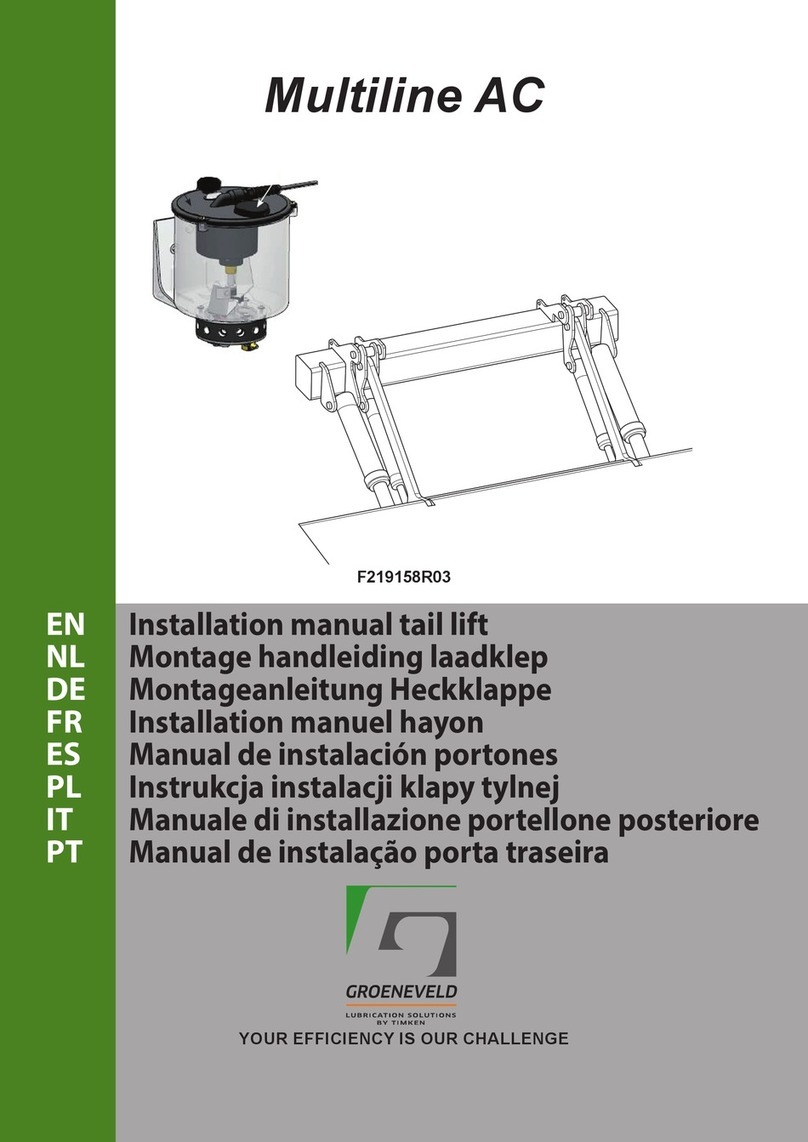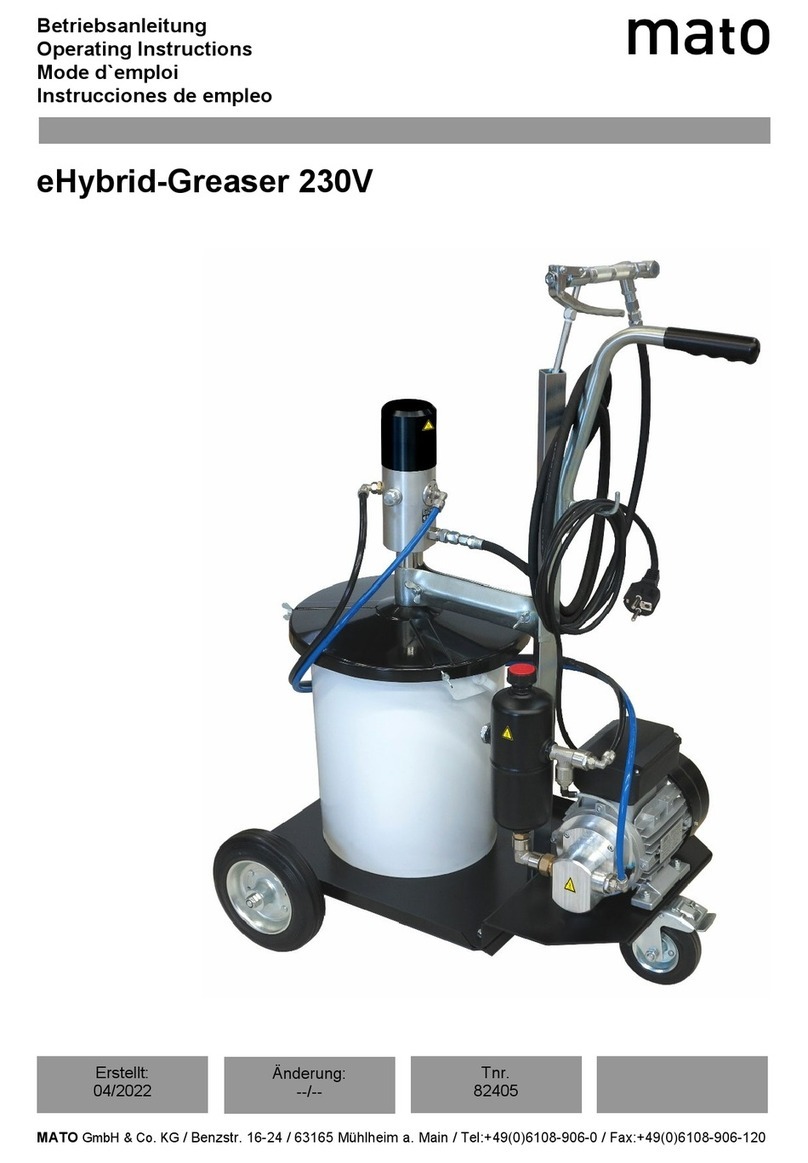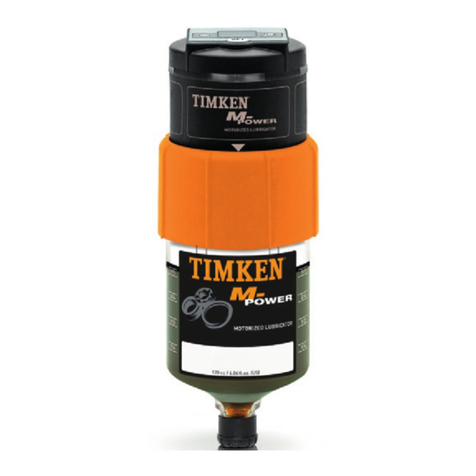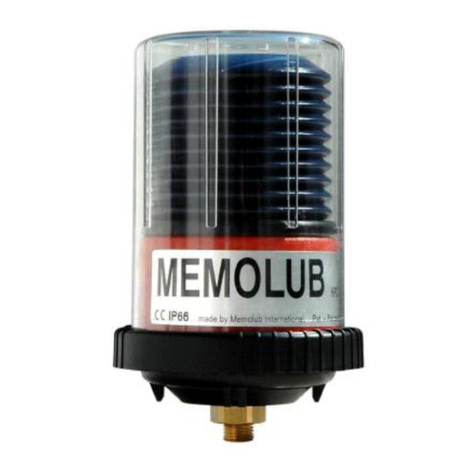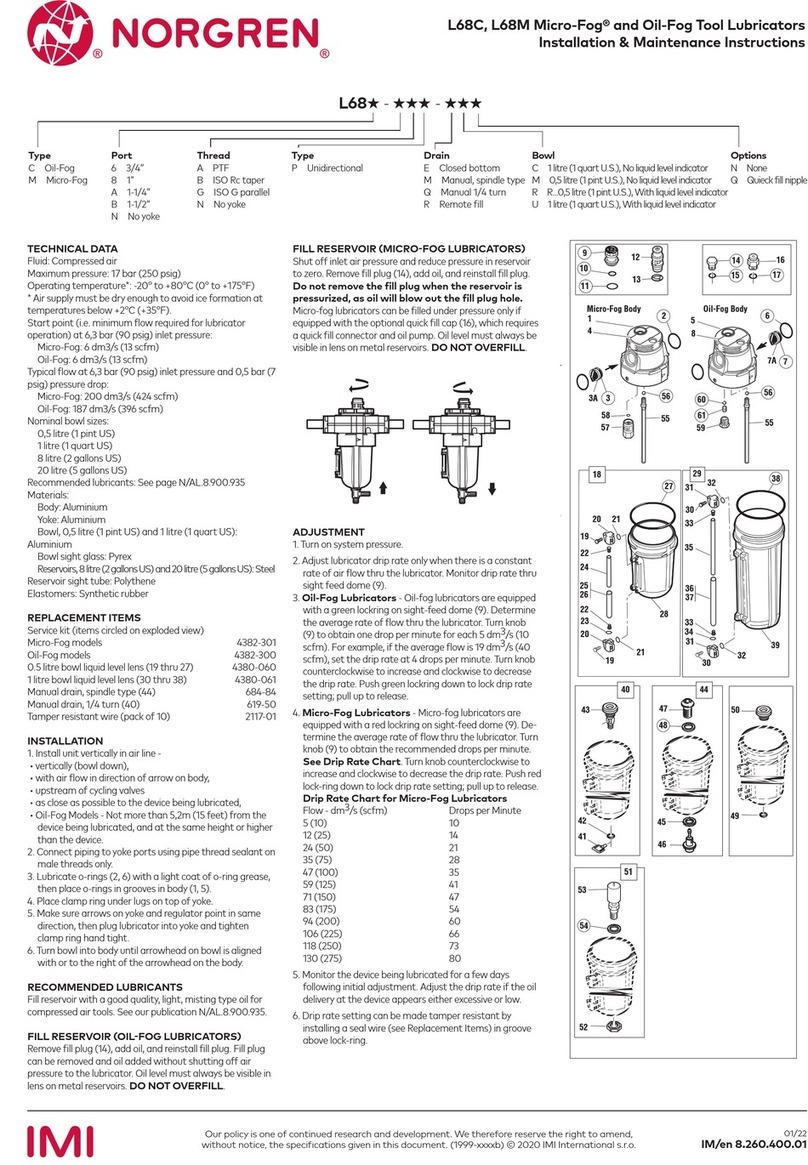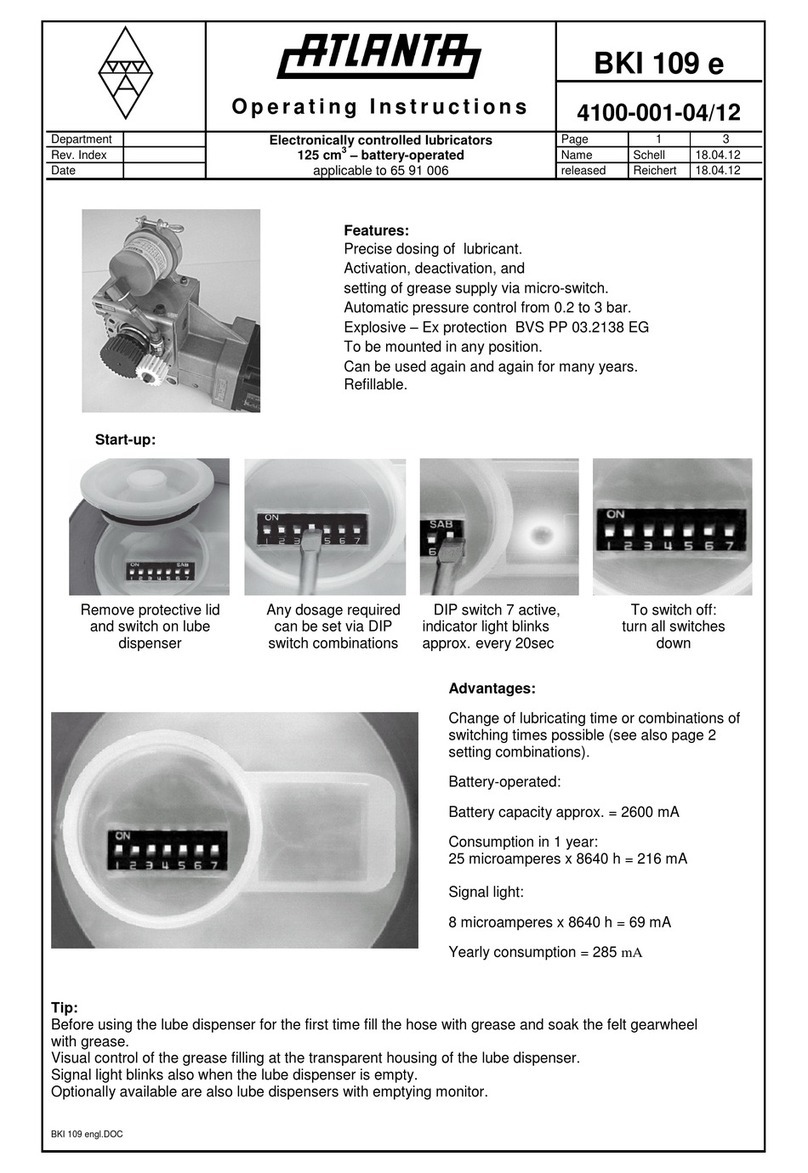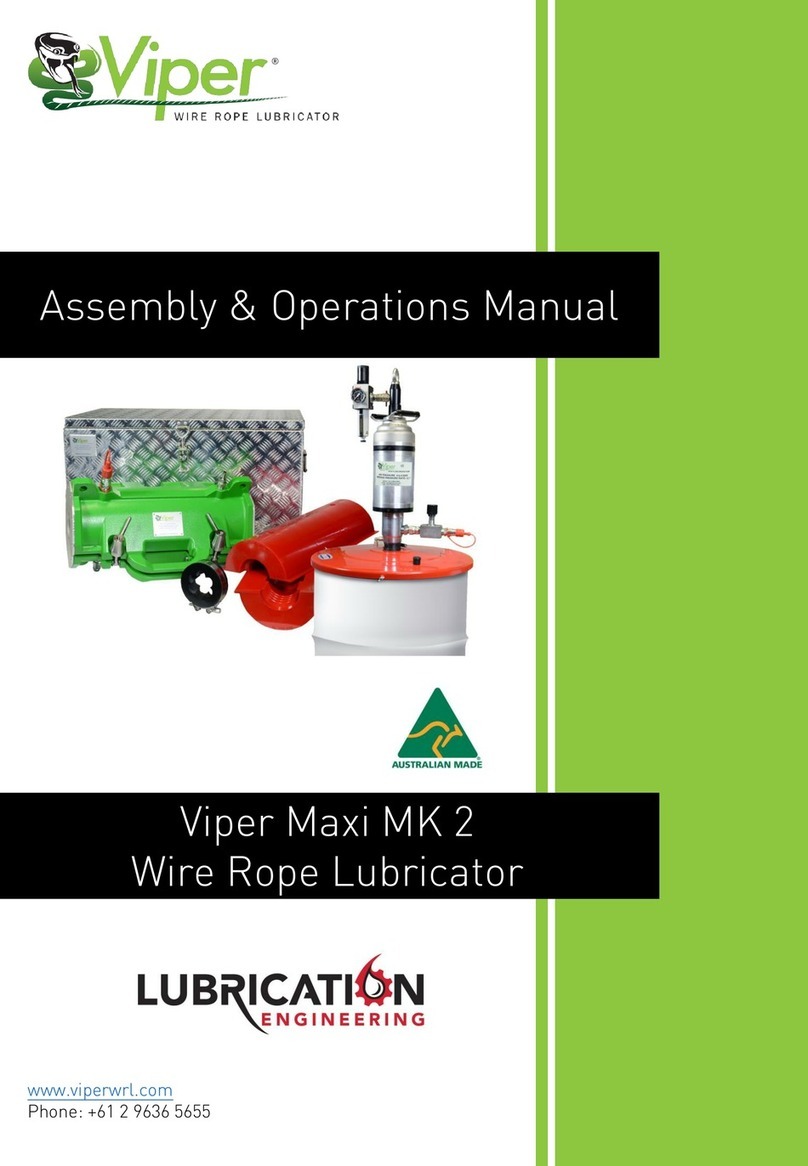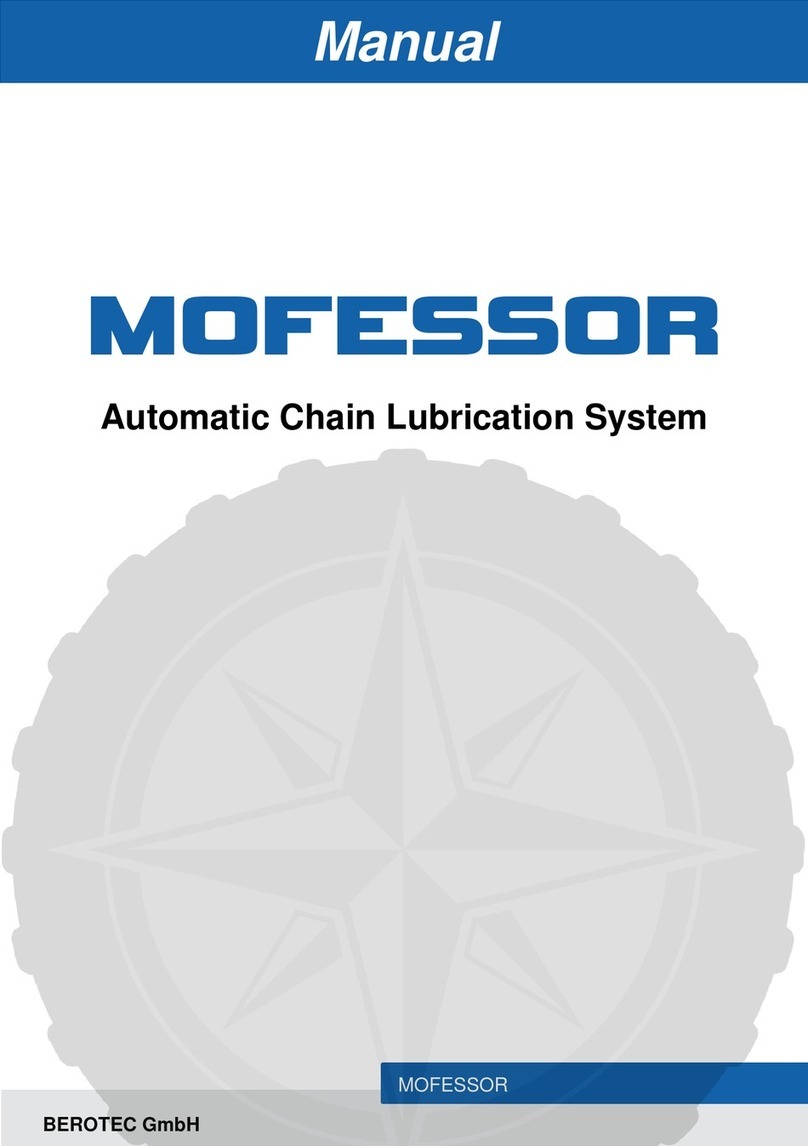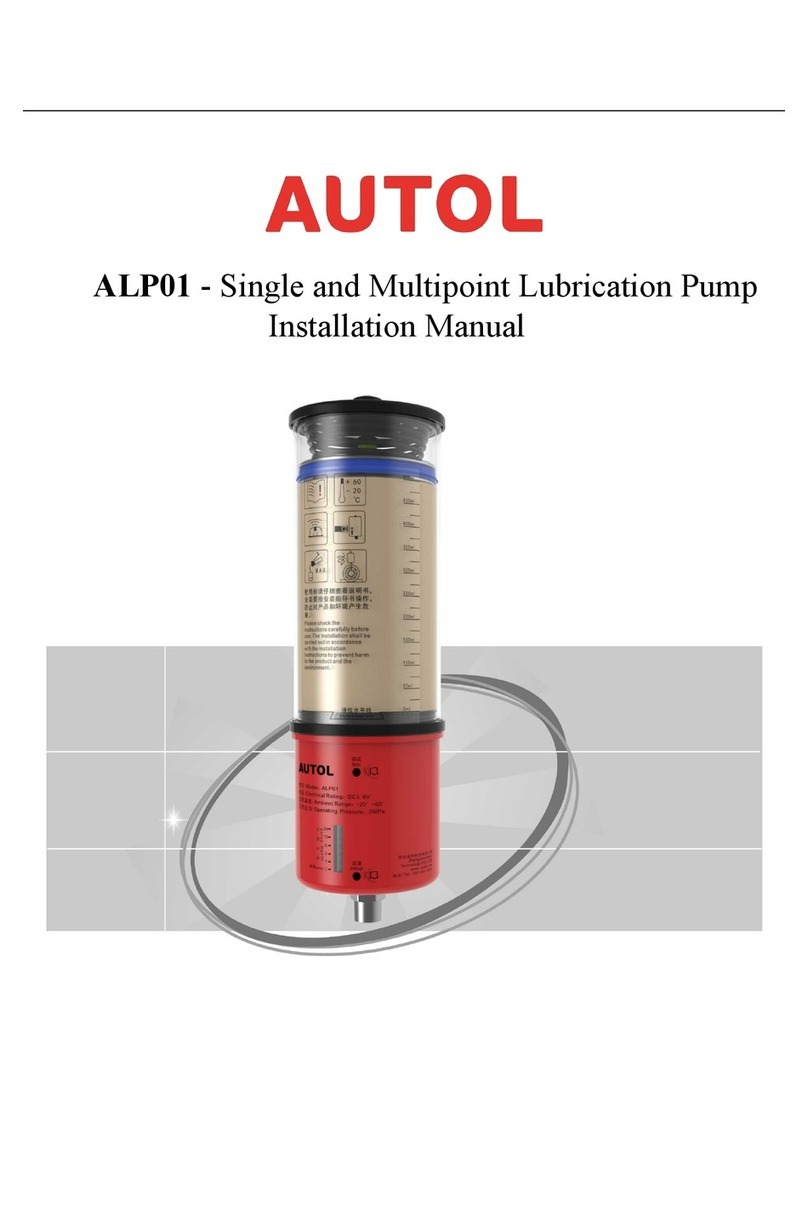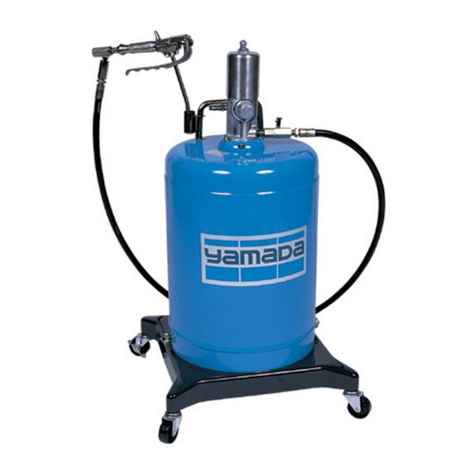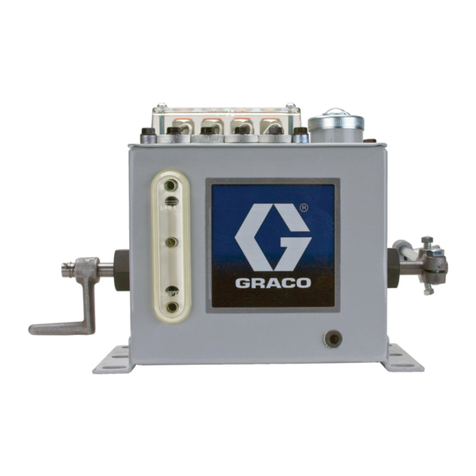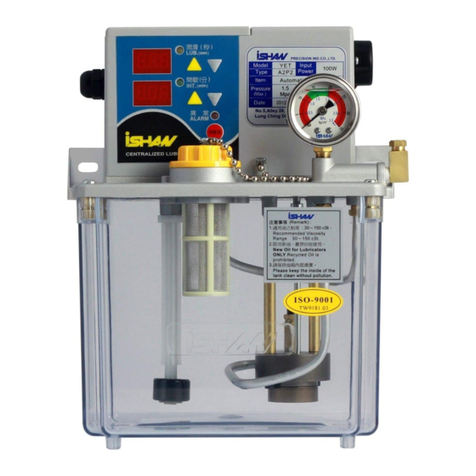3 BIJUR DELIMON INTERNATIONAL BA_2018_1_GB_WSE
2.2 Personnel qualification and training
The operating, maintaining, inspecting and
erecting personnel must have the
appropriate qualification for such work.
Area of responsibility, competence and
supervision of the personnel have to be
regulated by the user. If the personnel do
not have the necessary knowledge, they
have to be trained and given instructions.
This can be effected, if necessary, by the
manufacturer/supplier on behalf of the
user of the machine. Furthermore, the user
has to make sure that the contents of the
operating instructions are fully understood
by the personnel.
2.3 Dangers in case of nonobservance of
the safety instructions
The nonobservance of the safety
instructions may result in hazards to
persons, to the environment and to the
product. The non-observance of the safety
instructions may lead to the loss of any
claims for damages.
In detail, the nonobservance may for
instance lead to the following hazards:
Failure of important functions of the
product/system/machine
Failure of prescribed methods for
maintenance and repair
Harzard to persons by electrical,
mechanical and chemical influences
Hazard to the environment by the
leakage of dangerous substances
2.4 Safety conscious working
The safety instructions stated in these
operating instructions, the existing national
regulations as to the accident preventation
as well as possible internal working,
operating and safety rules of the user are
to be observed.
2.5 Safety instructions for the
user/operator
If hot or cold product or machine parts
lead to dangers, these parts have to be
protected against touch.
Protection against touch for moving
parts (e. g. coupling) must not be
removed when the machine is in
operation.
Leakages (e. g. from the shaft seal) of
hazardous goods to be delivered (e. g.
explosive, toxic, hot) are to be removed
in such a way that there is no danger to
persons and environment. Legal rules
are to be observed.
Hazards caused by electrial power are
to be excluded (for details please refer
for instance to the rules of the VDE and
the local power supply companies).
2.6 Safety instructions for maintenance,
inspection and installation work
The user has to take care that all the
maintenance, inspection and installation
work is executed by authorized and qualified
skilled personnel who have informed
themselves adequately by thoroughly
studying the operating instructions.
Basically, work on the machine is only to be
carried out during shut-down. It is
obligatory to observe the shut-down
procedure described in the operating
instructions.
Pumps or pump aggregates that deliver
media being hazardous to health have to be
decontaminated. Immediately after
completion of the work, all safety and
protective equipments have to be
reinstalled and/or reactivated.
Advice: When working with compressed
air, do wear glasses.
(DIN 4844 – Use breathing mask)
Advice: Observe EC-Safety Data Sheet
for materials of consumption and
additives used and use personal
protective equipment.
2.7 Unauthorized conversion and
manufacture of spare parts
Conversion or modifications to the product
are only permitted when agreed with the
manufacturer. Original spare parts and
accessories authorized by the
manufacturer serve to ensure safety. The
use of other parts may render the liability
for consequencial losses null and void.
2.8 Unacceptable modes of operation
The operational reliability of the product
supplied is only guaranteed if the product is
used in accordance with its intended
purposes as per section 1 - General - of the
operating instructions. The limiting values
specified in the data sheet must on no
account be exceeded.
2.9 Guidelines & standards
1., 2. and 3. guideline (see data sheet:
R&N_2009_X_GB)
2.10 Notes on environmental protection
and waste disposal
In correct operation with lubricants, the
components are subject to the special
requirements set by environmental
legislation.
The general requirements for lubricants
are specified in the respective safety data
sheets.
Used lubricants are hazardous forms of
waste and therefore require special
supervision in the sense of § 41 paragraph
1 sentence 1 and paragraph 3 no. 1 of KrW-
/AbfG (Closed-Loop Waste Management
Act).
Used oils must be handled in compliance
with AltölV (Waste Oil Ordinance).
The devices or components contaminated
with lubricant must be disposed of by a
certified waste management company.
Records of proper waste management must
be filed in conformance to NachwV
(Ordinance on Waste Recovery and Disposal
Records).
2. SAFETY
